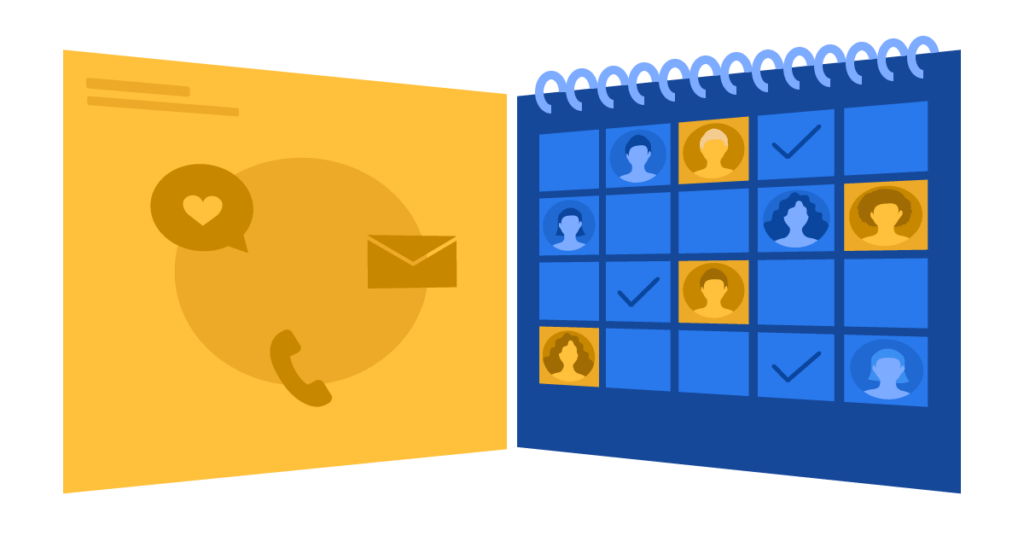How to Find Prospects for Your Business in 3 Steps


Tim Edwards
This post was originally published in July 2018 and has been updated for accuracy and comprehensiveness.
To be successful at sales, you need to master how to find prospects for your business. You need to do extensive research on which vertical you should target. Verticals are specific target markets that are most likely to purchase your solution.
In this chapter, we’ll go over:
- What is Account-Based Selling (ABS)?
- How to Create a B2B Ideal Customer Profile
- How to Gather Sales Prospect Data

Download the Ultimate B2B Appointment Setting Guide
Don’t have time to read the whole guide right now? Download the PDF version of the guide.
1. What is Account-Based Selling?
Your first step to finding prospects for your business is to start account-based selling. Account-based Selling (ABS) is the process of selling to targeted and specific companies by finding the right stakeholders within those organizations.
There are multiple benefits to ABS, including
- Stronger Sales and Marketing Alignment: Your sales and marketing teams will work together to identify who to target based on their collective data
- Stronger Relationships: Your SDRs can follow up with a smaller number of companies on a more regular basis
- Personalized Messaging: Your marketers can craft customized messages based on the company’s specific pain points and decision drivers
- Improved Conversion Rates: By focusing on companies that are more likely to convert, your sales conversion rates are likely to increase
Now that you’ve identified how you’re going to sell to your prospects, let’s dive into how you can find relevant prospects for your organization by developing ideal customer profiles (ICP).
2. How to Create a B2B Ideal Customer Profile
A B2B Ideal Customer Profile is the targeted company’s core attributes that make it more likely to convert. Unlike buyer personas, you’re focusing on the entire company as a whole.
The three key pieces of information you need to know about your targeted companies are:
Their Industry
Their Company Size
Your Average Deal Size
Industry
You should be targeting industries based on hard data and customer research — not based on where you want to sell your solution.
We highly recommend staying away from idealistic industries, as they’ll distract you from your short-term sales goals. Think about it: with a completely new industry, your organization will need to figure out a new way to market to these companies and find the right people to connect with — and there’s not even a guarantee that your tactics will work.
Instead, focus on what’s worked for you in the past. That way, your sales and marketing teams will have a better understanding of how to approach these prospects more effectively.
Company Size
We see that a lot of salespeople are tempted to only chase enterprise leads, as these leads can often afford more expensive solutions. While we won’t deter you from chasing bigger companies, we want to give you a few consideration points.
Enterprises tend to have strict gatekeepers and strong spam filters. This means that your appointment setters are going to have to jump through multiple hoops to get one person on the phone — and that person might not even be a decision-maker in the end.
Let’s say your SDR can get past the gatekeeper. They’ll then have to convince multiple departments within the targeted enterprise, thus prolonging the sales cycle. As prospects evaluate for longer periods, SDRs are challenged to convert them into SQLs with more touches.
Ultimately, your SDRs should be targeting companies of all sizes. As long as your targeted prospect can afford your product and will be interested in your solution, their company size should not matter as much.
Average Deal Size
Finally, you need to evaluate your average deal size. The average deal size is the average revenue a deal brings.
From our experience, companies with lower average sales prices (ASP) will require more sales appointments and a more active sales pipeline to scale successfully. That’s why a lot of salespeople are often tempted to only target enterprises; deals with enterprises tend to be larger deal sizes.
As mentioned earlier, enterprises tend to have more hierarchy and bureaucracy — adding more hoops your SDRs will have to navigate. By understanding your average deal size, you can calculate which company size and industries to target.
EBQ Tip: You can take your ideal customer profile a step further by drilling down on more characteristics — such as geographic location and technographic attributes. This can help your SDRs focus on which company they should be prospecting.
Understand Your Floor to Ceiling
While your ideal customer profile can include exact targets, we recommend that you create ranges for your ideal customer profile. That way, you’ll be able to target even more prospects down the line.
Keep in mind that you can supplement your SDR efforts with marketing. Utilizing email automation helps reduce the number of touches your appointment setters need to make to keep a sales pipeline active. By integrating marketing campaigns with an SDR outreach program, you can effectively go through large databases.

Subscribe to EBQ's Bimonthly Newsletter

Subscribe to EBQ's Bimonthly Newsletter
3. How to Gather Sales Prospect Data
Now, it’s time to gather sales prospect data based on your ICP. Start by looking at existing prospect and customer data. You can look at these data sources:
Sales Database
Website Analytics
Customer Call Records
Finance Data
Then, identify what types of companies tend to dominate your database. From there, you can conclude what your final ICPs should look like.
Sometimes, companies in early development just don’t have enough data. Here are some tips on how to gather data outside of your records:
- Conduct online surveys and group interviews with your target market.
- Speak to your product team about the needs and pain points of the market.
- Solicit insight from your salespeople about conversations they’ve had with prospects.
- Get your SDRs calling and use feedback from their leads to validate your market.

Download the Ultimate B2B Appointment Setting Guide
Don’t have time to read the whole guide right now? Download the PDF version of the guide.
How to Prospect for Sales Leads
Creating an active sales pipeline starts with figuring out how to find prospects for your business. To create these targets for your appointment setters, you’ll need to:
- Invest in an Account-Based Selling Structure
- Create B2B Ideal Customer Profiles
- Gather relevant prospect data from your records
Because this can be such a lengthy process, many organizations choose to outsource their lead generation teams. By partnering with EBQ, you’ll have access to an entire team of sales professionals and marketers — all for a flat monthly retainer fee. Visit our B2B Lead Generation Services to learn more.

